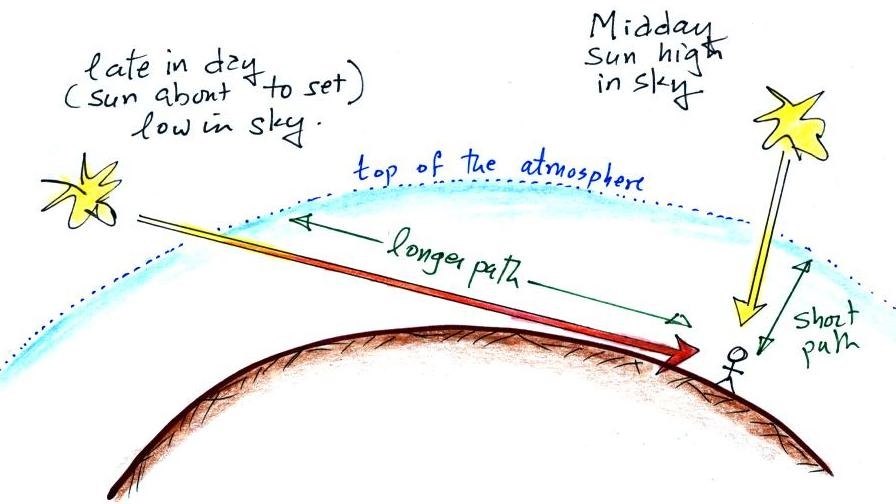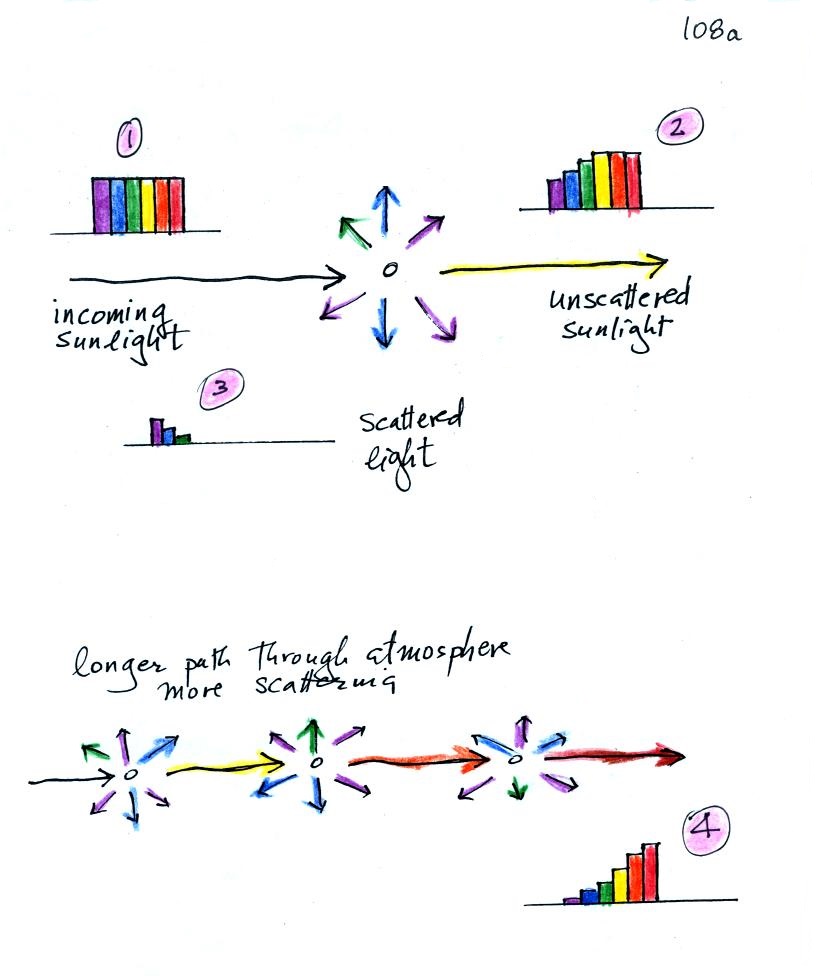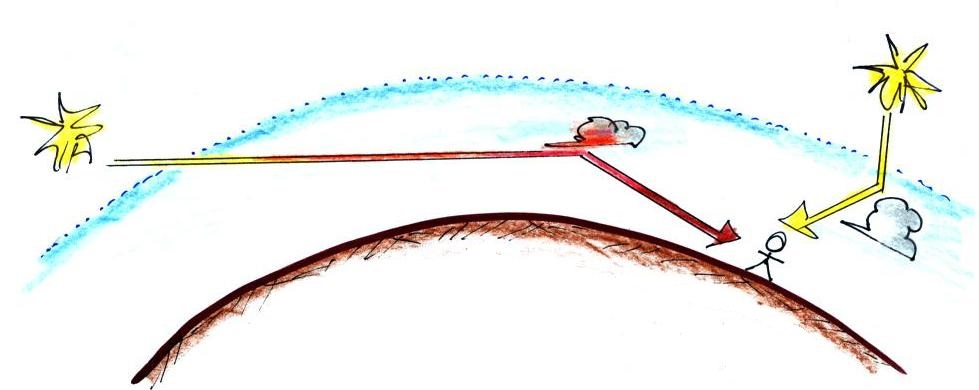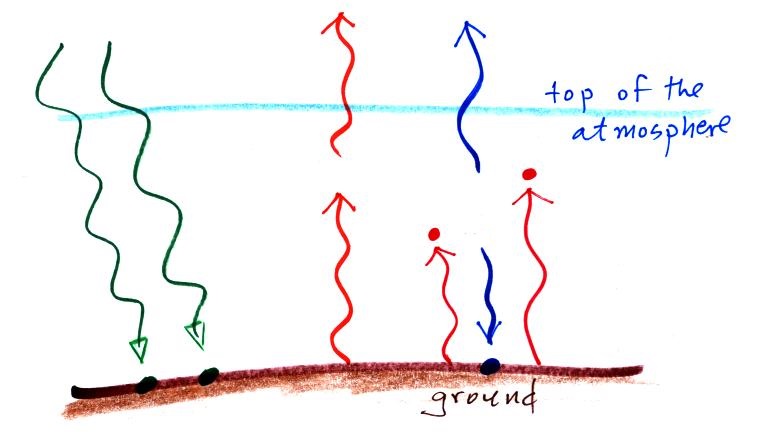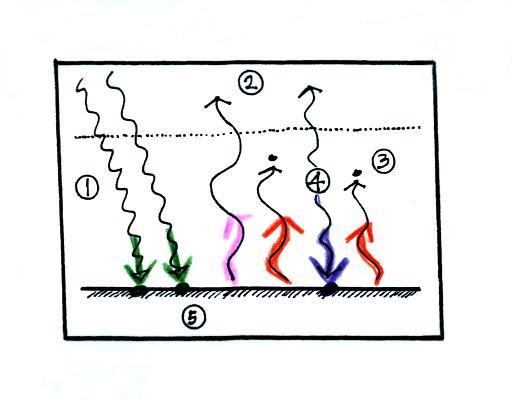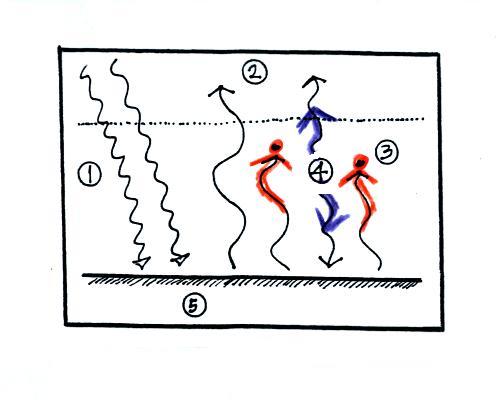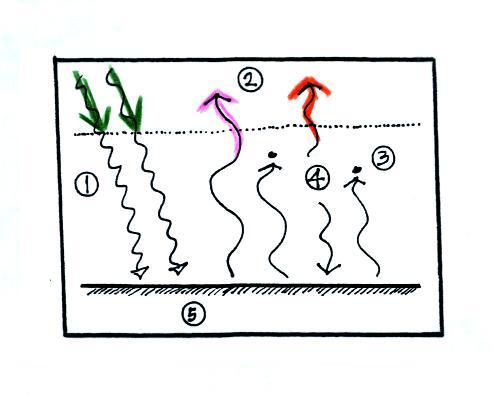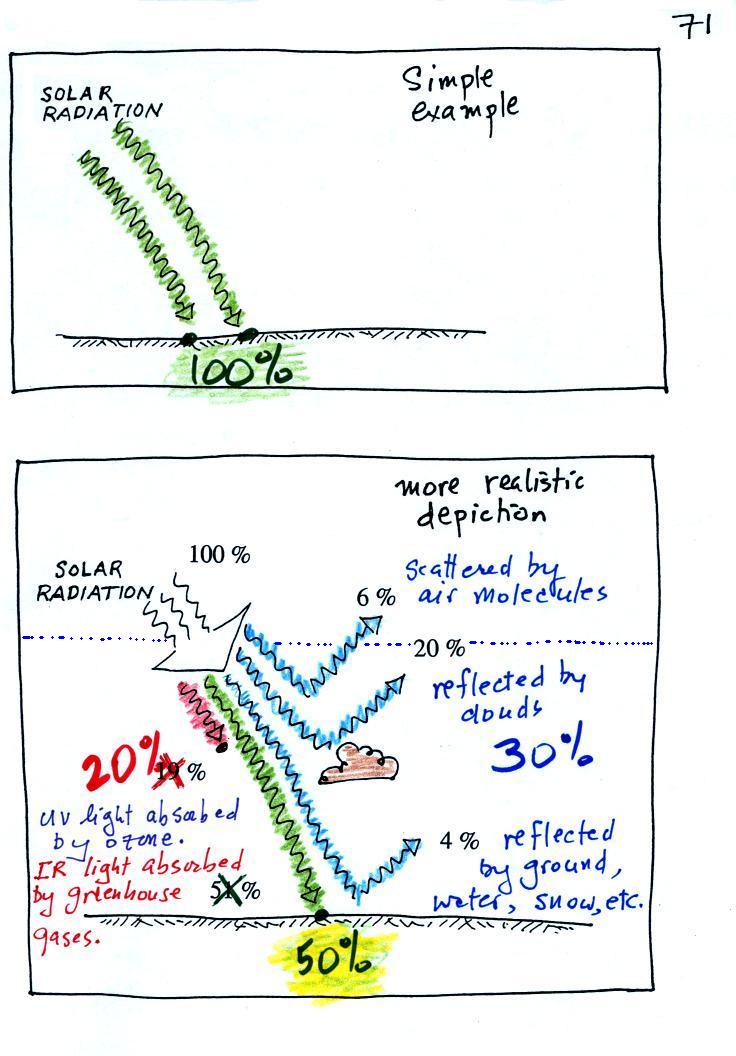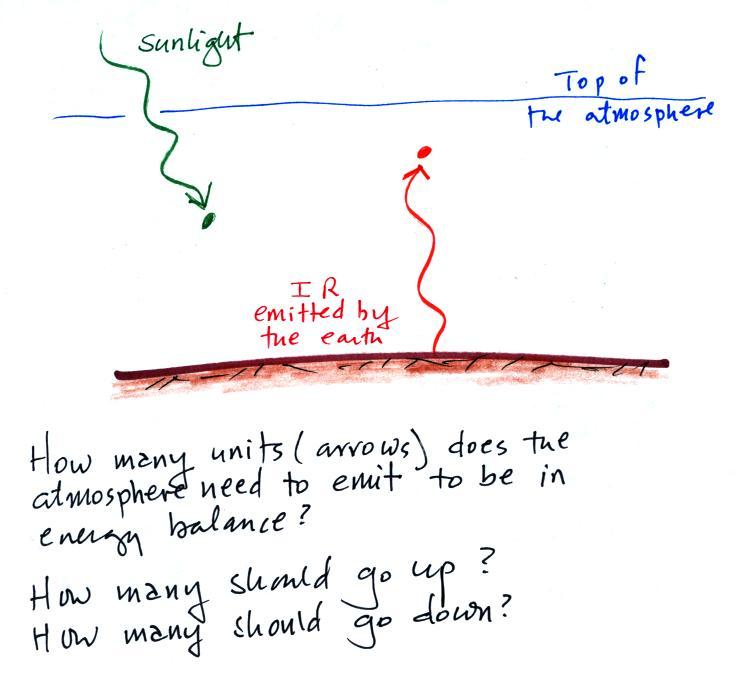Now that we know a little bit
more about the fate of incoming sunlight we'll improve our
simplified illustration of the greenhouse effect
somewhat. We'll make it a little more realistic.
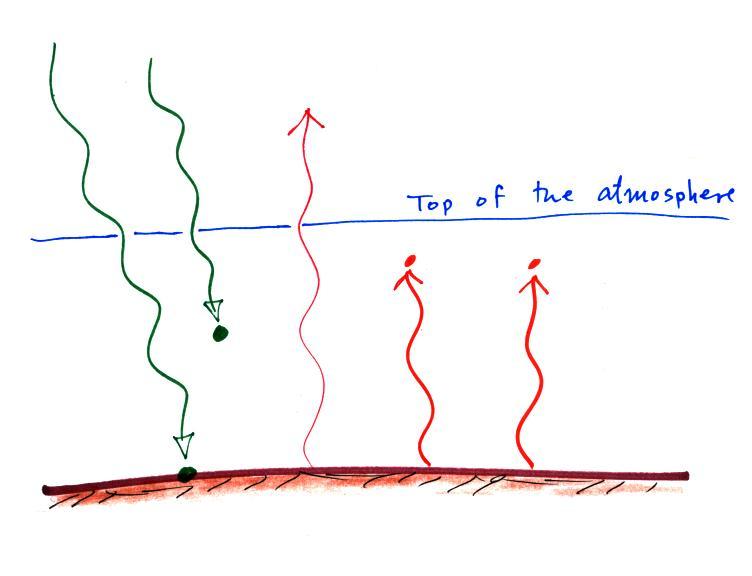
In this case we'll assume that 1 of the 2 incoming arrows of
sunlight is absorbed in the atmosphere instead of passing
through the atmosphere and being absorbed at the ground.
The ground is still emitting 3 arrows of IR light. What
would you need to add to this picture to bring it into energy
balance?
Start with the atmosphere. How many units does it need
to emit. It's absorbing 3 units or energy and must,
therefore, emit 3 arrows of radiation. How many should
we draw going upward, how many go downward?
We'll next look at the ground. It is absorbing 1 unit of
sunlight energy but emitting 3; it needs two more units of
energy. Thus we should send 2 of the 3 arrows of
radiation emitted by the atmosphere downward toward the
ground.
We'll send the remaining arrow of energy emitted by the
atmosphere upward and into space.
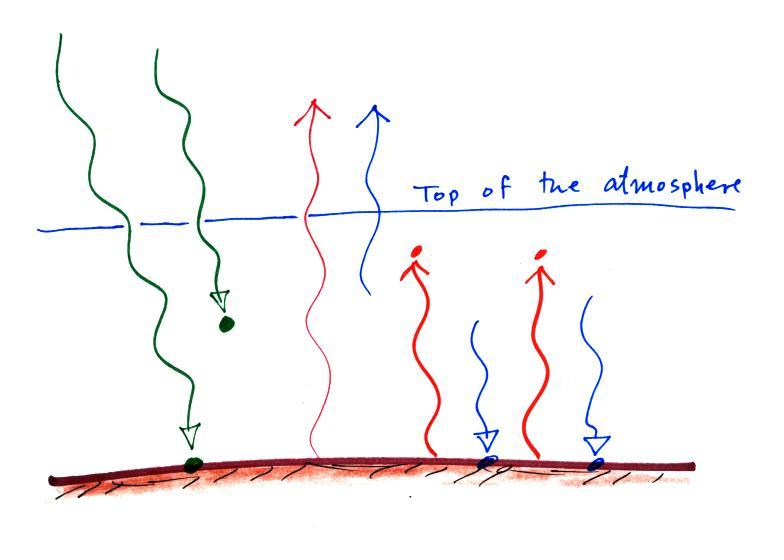
The atmosphere is emitting 3
arrows of IR light. 1 goes upward and into space, the
other two go downward and get absorbed by the ground.
Students
performing
Experiment #3 will be measuring the amount of
sunlight energy arriving at the ground. About 2 calories
pass through a square centimeter per minute at the top of the
atmosphere. Since about half of this arrives at the
ground on average, students should expect to get an answer of
about 1 calorie/cm2 min.
And if you weren't in class you missed a couple of Expt. #3
videos, potential Academy Award winners in the short
documentary film category.
